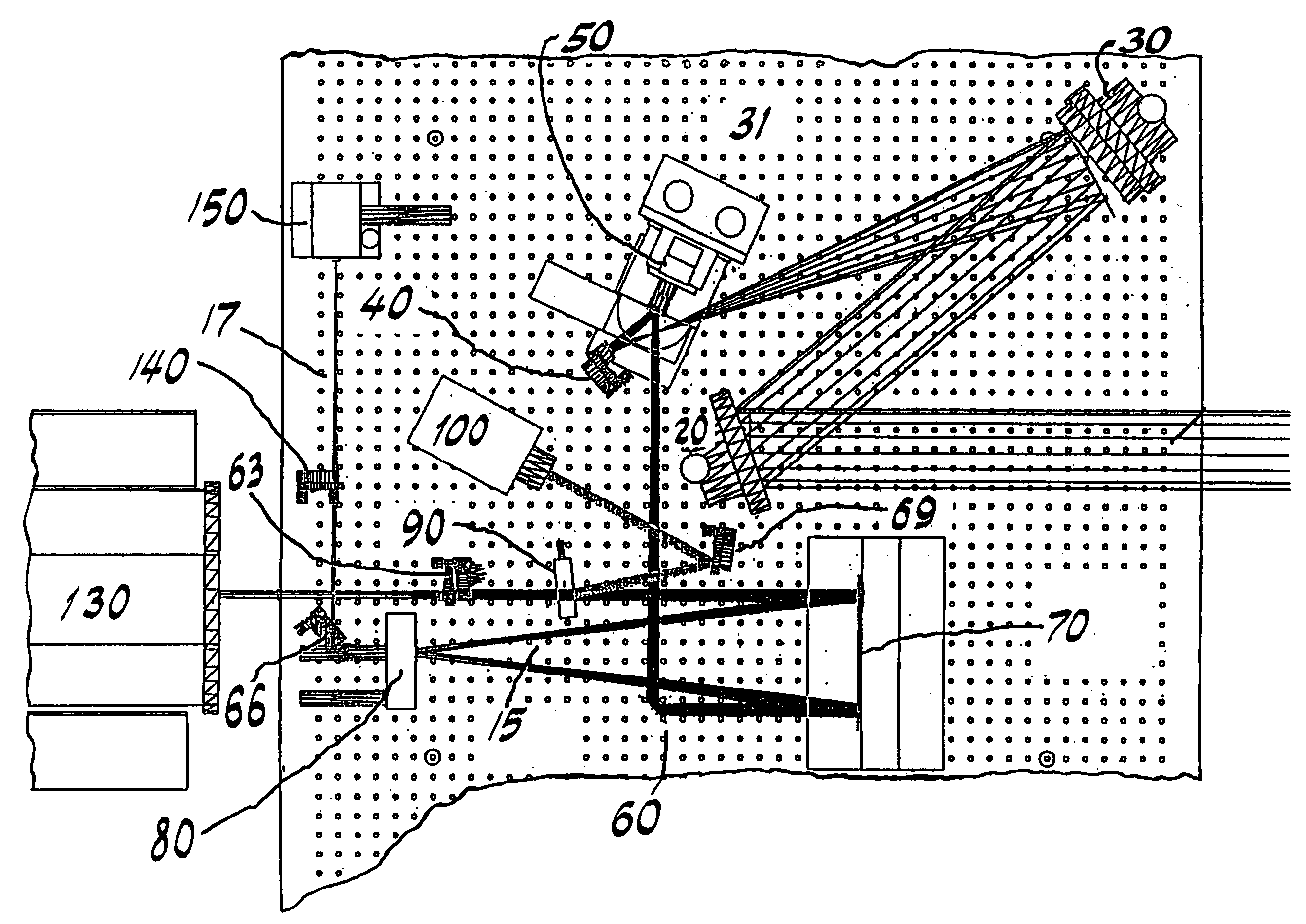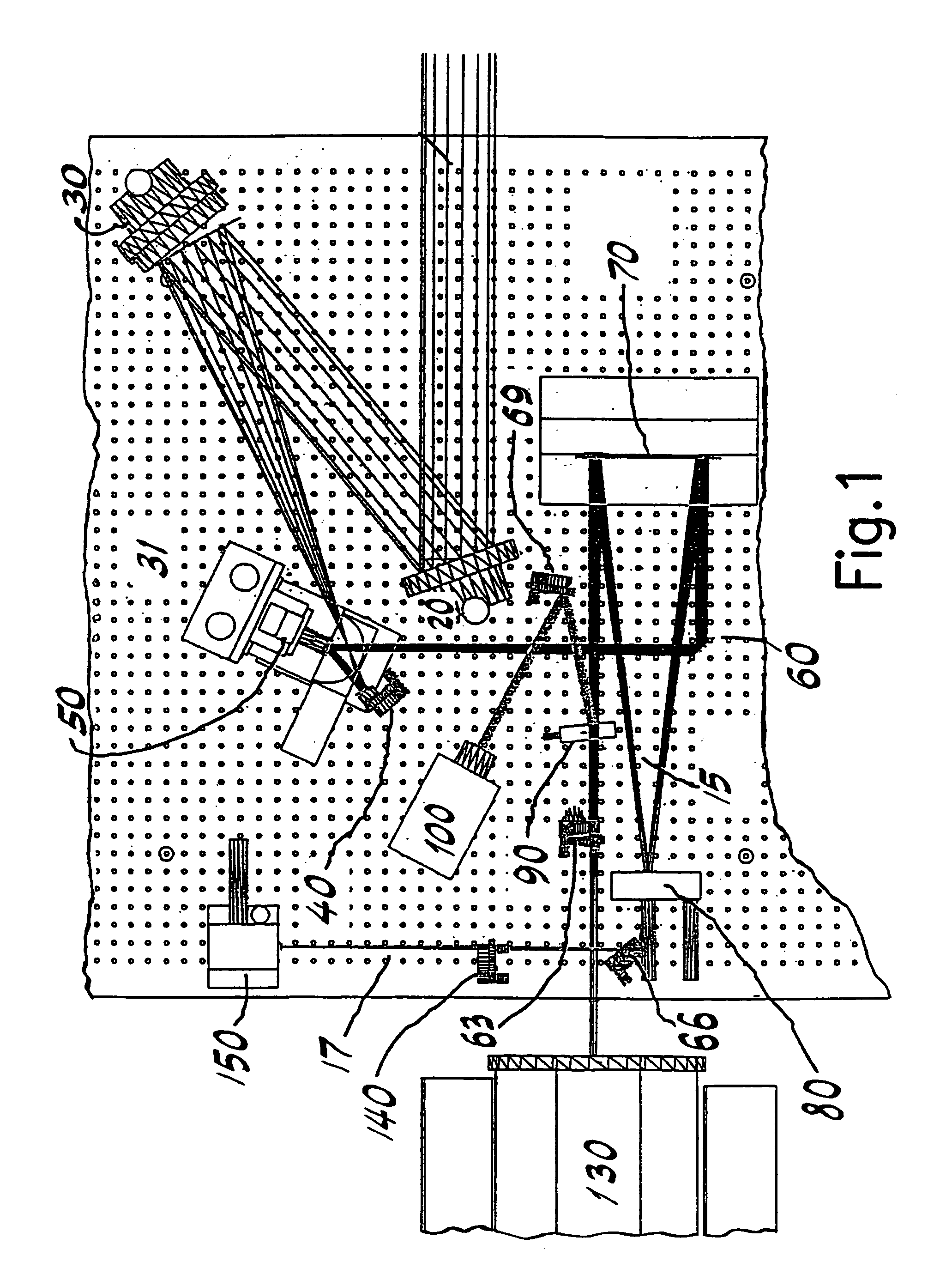Telescope accessory
a technology for telescopes and accessories, applied in the field of telescope accessories, can solve the problems of not being able to observe a planet previously, faint objects located on or near these spikes are difficult to detect, and the contrast of the final image produced by the telescope is degraded
- Summary
- Abstract
- Description
- Claims
- Application Information
AI Technical Summary
Benefits of technology
Problems solved by technology
Method used
Image
Examples
Embodiment Construction
[0029]In an embodiment according to the present invention, a beam of light from a body of interest (e.g., an extrasolar solar system or a satellite cluster) is separated into a first portion and a second portion by an occulting mask. The beam is directed onto the occulting mask by a plurality of mirrors both flat and parabolic. The first portion of the beam impinges a fiber head and the second portion impinges a Lyot stop. The Lyot stop reflects some of the light from the second portion of the beam onto an imaging camera and allows the remainder of the light to pass through. The light that passes through the Lyot stop impinges an IR camera, where bodies external to a light source are detected. Such external bodies can be, but are not limited to, planets orbiting an extrasolar star or smaller satellites orbiting a larger satellite. Based on the data received by the fiber head and / or the imaging camera, the Lyot stop, the occulting mask, and / or the mirrors are adjusted to improve the ...
PUM
 Login to View More
Login to View More Abstract
Description
Claims
Application Information
 Login to View More
Login to View More - R&D
- Intellectual Property
- Life Sciences
- Materials
- Tech Scout
- Unparalleled Data Quality
- Higher Quality Content
- 60% Fewer Hallucinations
Browse by: Latest US Patents, China's latest patents, Technical Efficacy Thesaurus, Application Domain, Technology Topic, Popular Technical Reports.
© 2025 PatSnap. All rights reserved.Legal|Privacy policy|Modern Slavery Act Transparency Statement|Sitemap|About US| Contact US: help@patsnap.com



